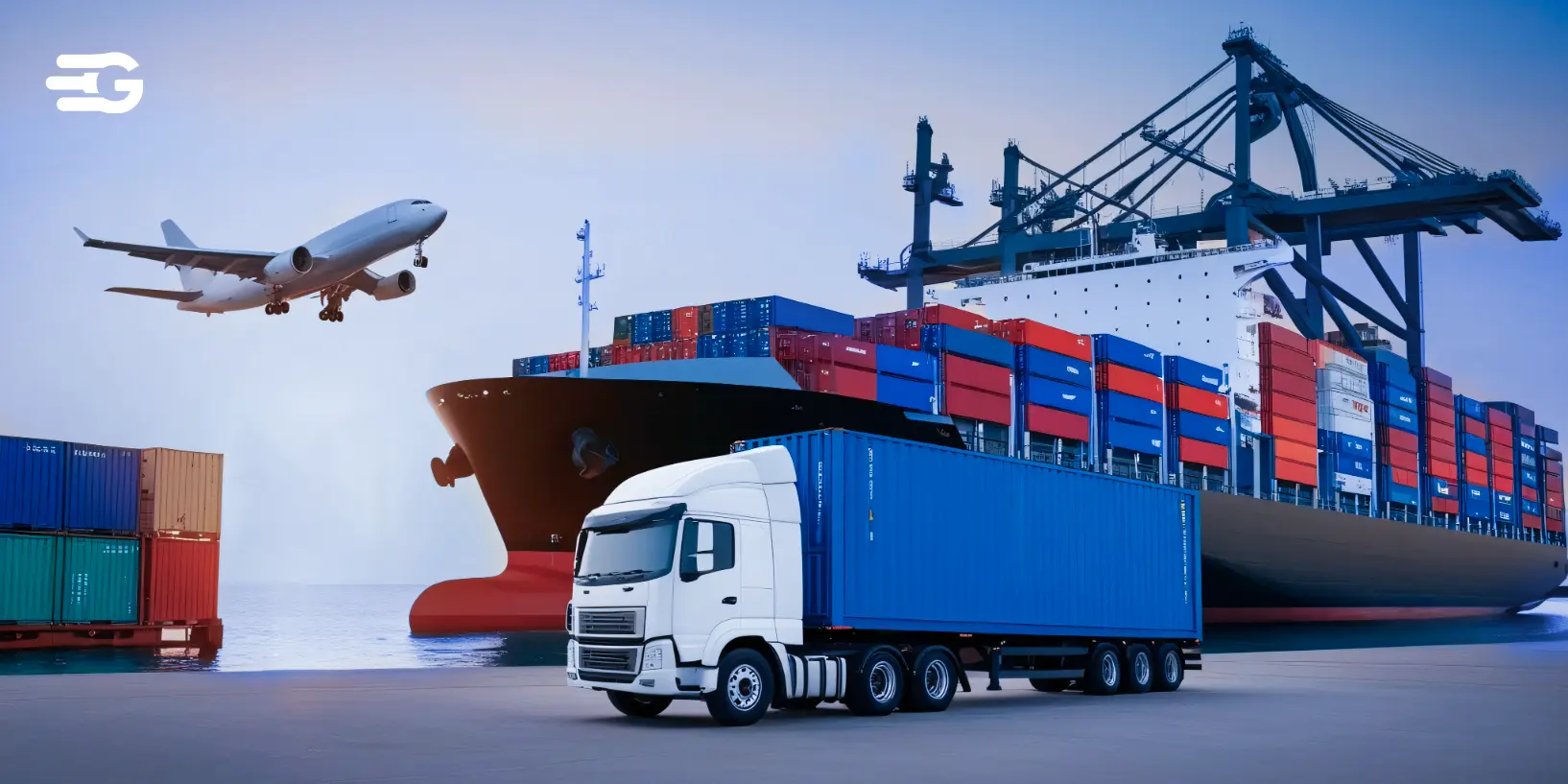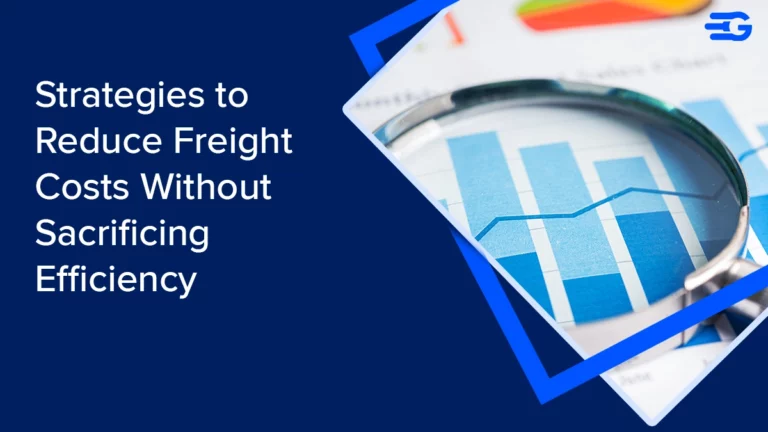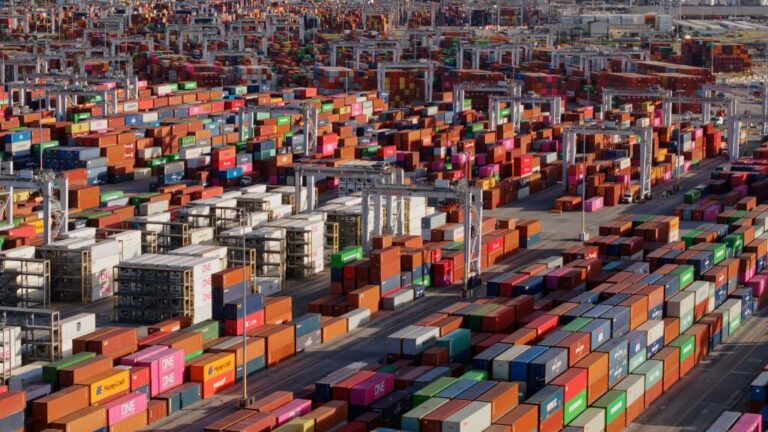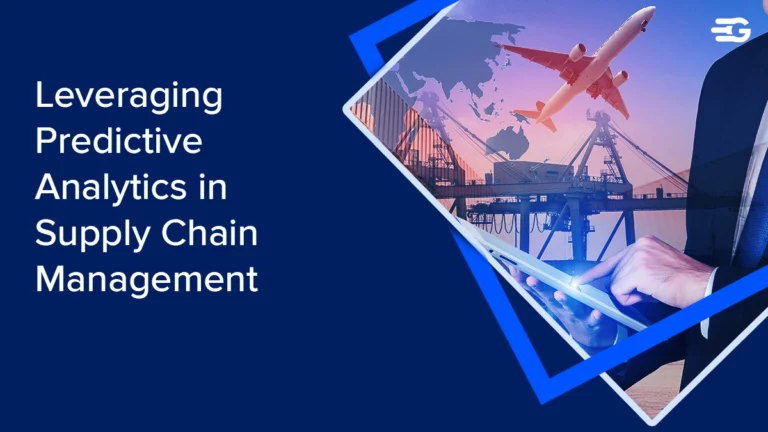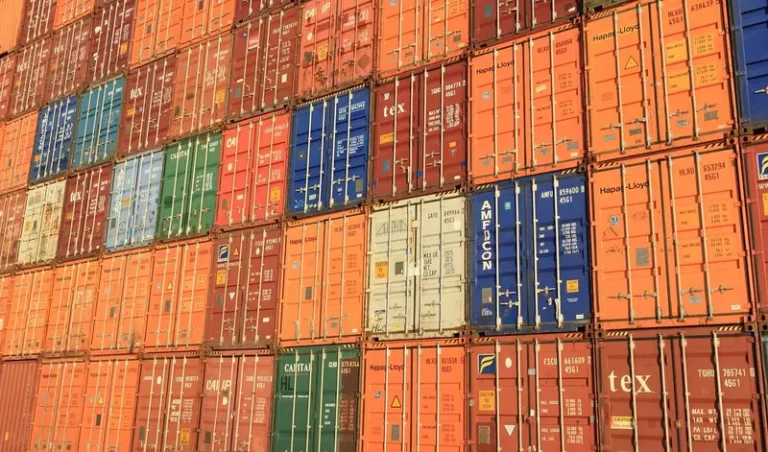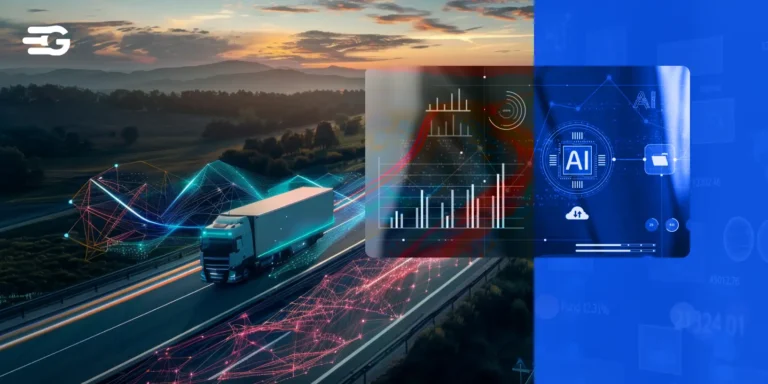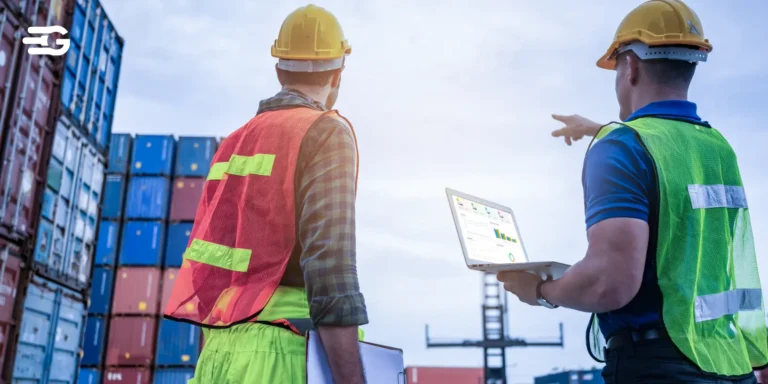Intermodal Transportation: A Complete Guide to Cost Savings, Efficiency, and Sustainability
In today’s complex global supply chain landscape, businesses are constantly seeking more efficient, cost-effective, and sustainable transportation solutions. Intermodal transportation has emerged as a powerful strategy that combines the strengths of multiple transport modes to optimize logistics operations. This comprehensive guide explores how intermodal transportation works, its benefits, challenges, and future trends that will shape the industry.
What is Intermodal Transportation?
Intermodal transportation refers to the movement of cargo using two or more transportation modes (such as truck, rail, ship, or barge) within a single journey, without handling the freight itself during transfers between modes. The critical element that makes intermodal transportation possible is containerization standardized shipping containers that can be easily transferred between different modes of transport without unpacking and repacking the cargo.
The key components of intermodal transportation include:
Shipping containers: Standardized units (typically 20-foot or 40-foot containers) that facilitate easy transfer between modes Intermodal terminals: Specialized facilities where containers are transferred between transportation modes Lifting equipment: Cranes, reach stackers, and other machinery designed to move containers Transportation modes: Including trucks (drayage), trains, ships, and barges Information systems: Technology that coordinates scheduling, tracking, and documentation.
How Intermodal Differs from Multimodal Transport (With Comparison Table)
While the terms intermodal and multimodal are sometimes used interchangeably, they represent distinct approaches to transportation management:
| Feature | Intermodal Transportation | Multimodal Transportation |
| Contract Structure | Multiple contracts with different carriers | Single contract with one carrier/forwarder |
| Liability | Split between carriers for their segments | One carrier assumes responsibility for entire journey |
| Documentation | Multiple bills of lading | Single bill of lading |
| Coordination | Shipper may coordinate transfers | Service provider handles all coordination |
| Container Handling | Standardized containers, minimal handling of goods | May or may not use standardized containers |
| Flexibility | Fixed network of established routes | Potentially more adaptable routing options |
According to the Intermodal Association of North America (IANA), intermodal specifically refers to the movement of cargo in shipping containers or trailers by more than one mode of transportation, with standardization being the critical factor enabling seamless modal transfers.
The Evolution of Intermodal Transportation: Past, Present, and Future
The Rise of Containerization and Standardization
The modern intermodal transportation system began with the innovation of shipping containers in the 1950s. Malcolm McLean, often credited as the father of containerization, revolutionized shipping by developing standardized containers that could be loaded directly onto ships from trucks without unpacking the contents.
Before containerization, cargo was handled as “break bulk,” with individual items loaded and unloaded separately, a labor-intensive, time-consuming, and expensive process. The adoption of standard container sizes (particularly the 20-foot equivalent unit or TEU) transformed global shipping by dramatically reducing port handling time and labor costs.
Key Milestones in Intermodal Logistics Innovation
The evolution of intermodal transportation has been marked by several transformative developments:
1956: McLean’s first containerized shipment aboard the Ideal X from Newark to Houston 1968: International standardization of shipping containers through the International Organization for Standardization (ISO) 1970s: Development of double-stack rail cars, doubling the capacity of container trains 1980s: Deregulation of U.S. transportation industry through the Staggers Rail Act and Motor Carrier Act, enabling more efficient intermodal partnerships 1990s: Introduction of advanced terminal automation and computerized logistics systems 2000s: Development of mega container ships and super ports to handle increased global trade 2010s: Integration of digital platforms and real-time visibility solutions.
Dr. Jean-Paul Rodrigue, professor at Hofstra University’s Department of Global Studies and Geography, notes: “The standardization of containers fundamentally changed not just shipping but the entire global economy, enabling the complex supply chains we rely on today.”
Emerging Technologies Shaping the Future
The intermodal landscape continues to evolve with new technologies driving further efficiency:
1. Blockchain: Creating immutable records for documentation and chain of custody.
2. Internet of Things (IoT): Enabling real-time tracking and condition monitoring of containers
3. Artificial Intelligence: Optimizing routing, predicting delays, and improving planning.
Benefits of Intermodal Transportation for Global Supply Chains
Cost-Effectiveness and Freight Savings
Intermodal transportation offers significant cost advantages compared to single-mode transportation, particularly for long-distance freight:
Reduced fuel consumption: Rail is approximately 3-4 times more fuel-efficient than trucks for long hauls Labor efficiency: One train crew can move the equivalent of dozens of truck loads Economies of scale: Consolidation of shipments reduces per-unit transportation costs
According to the Association of American Railroads, moving freight by rail instead of truck reduces transportation costs by approximately 20-30% for distances over 500 miles.
A 2021 study by the American Transportation Research Institute found that intermodal rail-truck combinations can save shippers between $0.05 and $0.15 per ton-mile compared to over-the-road trucking alone.
Increased Efficiency and Reduced Transit Delays
Intermodal transportation can improve operational efficiency in several ways:
Reduced congestion impact: Rail and water transportation avoid highway congestion Continuous operation: Trains and ships can operate during hours when truck movements may be restricted Optimized modal strengths: Using each mode where it’s most efficient (rail for long distances, trucks for local delivery) Reduced handling: Containerization minimizes cargo handling, reducing damage and loss.
A study by the Federal Highway Administration found that intermodal corridors can increase freight capacity by 10-20% while reducing transportation costs by up to 15%.
Environmental Impact: Reducing Carbon Footprint
Sustainability is perhaps one of the most compelling benefits of intermodal transportation:
Lower emissions: Rail produces approximately 75% lower greenhouse gas emissions per ton-mile compared to trucking Reduced road congestion: One intermodal train can replace 280 or more trucks on highways Decreased infrastructure wear: Less road damage from heavy trucks.
The Environmental Protection Agency (EPA) SmartWay program reports that intermodal shipping can reduce carbon emissions by up to 65% compared to truck-only transportation.
“Intermodal transportation is a critical element of sustainable logistics,” states Dr. Suzanne Greene of MIT’s Center for Transportation & Logistics. “Companies with aggressive carbon reduction goals are increasingly turning to intermodal solutions as a proven method to reduce their transportation emissions.”
Improved Freight Security and Risk Management
Intermodal transportation enhances cargo security through:
Reduced handling: Fewer touch points mean fewer opportunities for theft or damage Sealed containers: Cargo remains in sealed containers throughout transit Tracking systems: Modern intermodal shipments utilize advanced tracking technologies Distributed risk: Multiple transportation modes spread risk across different carriers and routes.
The World Shipping Council reports that containerized shipping has substantially reduced cargo theft rates compared to break-bulk shipping methods, with sealed containers providing both physical security and better custody documentation.
Key Challenges and How to Overcome Them
Handling Delays and Disruptions
Intermodal transportation can face several types of disruptions:
Weather events: Storms, flooding, and extreme temperatures affecting rail lines or ports Port congestion: Capacity constraints at major intermodal hubs Customs delays: Regulatory inspections and documentation issues Equipment shortages: Container and chassis availability constraints.
Strategies for mitigating disruption risks include:
Implementing predictive analytics to anticipate potential disruptions Developing contingency routing plans Maintaining buffer inventory for critical items Using visibility platforms to provide real-time status updates Building flexibility into delivery schedules.
Coordination Complexities and Technological Solutions
The involvement of multiple carriers creates coordination challenges:
Information sharing: Ensuring all parties have necessary shipment data Scheduling alignment: Coordinating transfers between modes Capacity management: Balancing equipment needs across the network Documentation consistency: Maintaining accurate records across carriers.
Centralized shipment visibility across multiple carriers Automated documentation management Predictive ETAs using machine learning algorithms Exception management and proactive alerts Performance analytics to identify bottlenecks
Infrastructure and Regulatory Challenges
Physical and regulatory constraints include:
Inadequate intermodal terminals: Limited capacity at key transfer points Rail network limitations: Track conditions, clearance restrictions, and shared passenger/freight corridors Last-mile connectivity: Challenges in efficient terminal-to-destination transportation Regulatory inconsistencies: Varying rules across jurisdictions Infrastructure funding gaps: Insufficient investment in key facilities
Industry coalitions like the Coalition for America’s Gateways and Trade Corridors advocate for increased infrastructure investment, while technologies like terminal automation and appointment systems help maximize existing capacity.
How Intermodal Transportation Works: A Step-by-Step Process
Step 1: Choosing the Right Intermodal Route
The intermodal journey begins with strategic route planning:
Evaluate origin and destination proximity to intermodal terminals Assess available service schedules and transit times Compare costs across potential routing options Consider service reliability factors and carrier performance Analyze potential bottlenecks or capacity constraints Factor in specific cargo requirements (temperature control, dimensions, weight)
Effective route selection requires understanding modal transition points and their operational constraints. Advanced transportation management systems can optimize these decisions using historical performance data and real-time conditions.
Step 2: Booking and Managing Shipments with Digital Platforms
Modern intermodal shipping relies heavily on digital platforms to streamline operations:
Create consolidated shipping documentation Select carriers for each transportation segment Schedule pickup and delivery appointments Generate and distribute required customs documentation Coordinate equipment availability (containers, chassis) Communicate special handling requirements to all parties.
Digital platforms like GoComet provide centralized control panels for these functions, with automated workflows that reduce manual processes and error rates.
Step 3: Tracking and Visibility Enhancements
Real-time tracking has become essential for effective intermodal management:
Container-level tracking using GPS and cellular technologies Terminal gate and interchange event monitoring Predictive ETA calculations using machine learning Exception alerts for delays or deviations Condition monitoring (temperature, humidity, shock) for sensitive cargo Documentation status tracking for customs clearance..
Step 4: Final Delivery and Cost Optimization
The final phase involves:
Coordination of terminal pickup appointment Last-mile delivery planning Empty container return logistics Documentation reconciliation and proof of delivery Performance analysis to identify improvement opportunities Cost allocation and freight audit.
Digital freight platforms automate many of these processes, providing analytics to continually refine and optimize the intermodal network.
Real-World Examples of Successful Intermodal Transportation Strategies
Case Study: How Companies Save Millions with Intermodal Shipping
IKEA’s Intermodal Transformation
The global furniture retailer IKEA has embraced intermodal transportation as a cornerstone of its sustainability and efficiency strategy. By shifting 40% of its North American shipments from truck-only to intermodal rail, IKEA achieved.
45% reduction in carbon emissions for affected routes 25% decrease in transportation costs Improved delivery reliability during peak seasons Reduced exposure to truck driver shortages.
IKEA’s Chief Sustainability Officer, Pia Heidenmark Cook, noted: “Intermodal transportation is not just environmentally responsible but also makes strong business sense in our operation.”
Procter & Gamble’s Network Optimization
Consumer goods giant P&G redesigned its North American distribution network around intermodal hubs, resulting in:
Annual savings of approximately $100 million in transportation costs 25% reduction in empty miles Improved inventory positioning near major markets Enhanced resilience during capacity crunches.
How Major Logistics Players Use Intermodal for Sustainable Shipping
Maersk’s Integrated Container Logistics
Global shipping leader Maersk has developed an integrated intermodal network that provides:
Seamless sea-rail-truck connections across continents Single documentation process for end-to-end shipments Reduced carbon footprint through optimized modal selection Consolidated visibility through their digital platform.
Maersk’s CEO of Ocean and Logistics, Vincent Clerc, emphasizes: “The future of logistics is integrated. By controlling the entire journey—sea, rail, and road—we can provide better service while reducing environmental impact.”
Amazon’s Middle Mile Network
E-commerce giant Amazon has built an extensive intermodal network to support its distribution system:
Strategic intermodal terminal locations near fulfillment centers Dedicated container scheduling aligned with inventory needs Custom tracking solutions integrated with fulfillment systems Reduced reliance on long-haul trucking.
This approach has allowed Amazon to maintain rapid delivery promises while optimizing transportation costs and improving sustainability metrics.
Future Trends in Intermodal Transportation: What’s Next?
AI and Machine Learning in Intermodal Logistics
Artificial intelligence is transforming intermodal planning and execution:
Dynamic routing algorithms that continuously optimize based on changing conditions Predictive maintenance for equipment and infrastructure Automated exception management prioritizing human intervention where needed Natural language processing for documentation and compliance Demand forecasting improving equipment positioning.
IBM’s research on AI in logistics suggests that machine learning algorithms can reduce planning time by up to 50% while improving asset utilization by 10-15%.
The Rise of Smart Containers and IoT Tracking
Connected container technology is rapidly evolving:
Embedded sensors monitoring location, temperature, humidity, and shock Solar-powered tracking units providing continuous visibility Remote-controlled locking and security systems Automated customs documentation triggered by geofencing Predictive maintenance alerts for refrigerated containers.
According to research firm Gartner, IoT in transportation is growing at over 19% annually, with smart containers representing one of the fastest-growing segments.
Traxens, a leader in smart container technology, reports that their systems can reduce claims and cargo loss by up to 75% through improved monitoring and intervention.
Government Regulations and Sustainability Mandates
Policy developments are accelerating the shift toward more sustainable freight:
Carbon pricing mechanisms affecting transportation economics Low emission zones restricting truck access in urban areas Infrastructure funding increasingly tied to sustainability metrics Standardized carbon reporting requirements for transportation Incentives for alternative fuel adoption in freight.
The European Union’s Green Deal targets a 90% reduction in transport-related greenhouse gas emissions by 2050, with significant implications for modal shift to more sustainable options like rail and inland waterways.
In the United States, the Infrastructure Investment and Jobs Act includes over $17 billion specifically for port and intermodal improvements, signaling a renewed focus on this critical transportation sector.
As sustainability pressures increase and technology continues to advance, intermodal transportation will likely play an increasingly central role in global supply chains, offering a rare combination of economic, operational, and environmental benefits.
